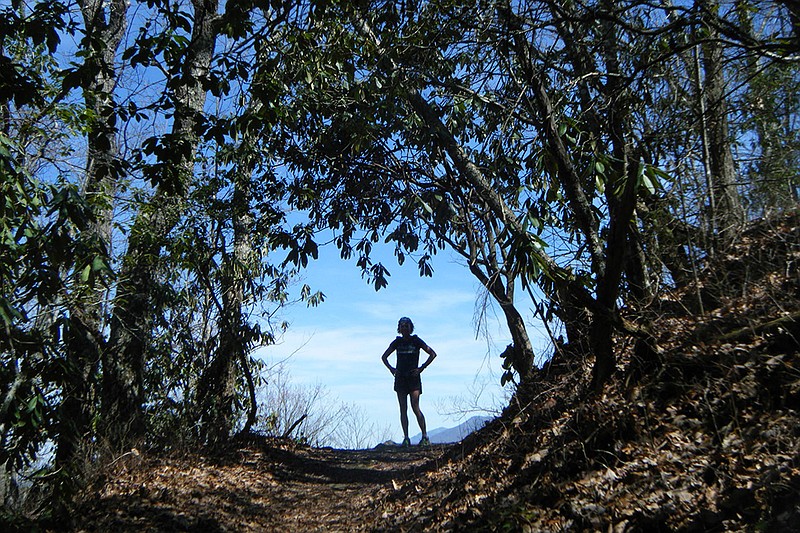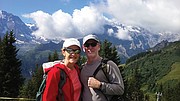Over the last 30 years, Chattanooga hiker Elizabeth O'Connor has sustained an impressive collection of bruises, blisters and yellow jacket stings while out on the trail, but none of them have stopped her from powering through a route.
Now, as she prepares to run the Chickamauga Battlefield Marathon this month, she's betting that those hiking experiences will be an asset on race day.
Though hiking may not feel as intense as going full speed on a treadmill, more and more researchers are acknowledging its value as a supplement to running training. The low-impact activity not only causes less stress on the knees and ankles than running, but also permits longer periods of exercise - meaning more time to build strength - while adding variety to a traditional running routine.
"That endurance from being on the trail for so long, even when your feet are tired and your legs are tired, has definitely carried into my running," O'Connor says. "It gives me confidence that even if something happens on the run, I can still finish."
O'Connor has only been running for five years, but as former president of the Chattanooga Hiking Club, she is no stranger to the occasional 17-mile hike in the Great Smoky Mountains - or such a trek's many benefits for races. In addition to heightened endurance, she says trekking over the rough terrain has increased her spatial awareness, making it easier to avoid tripping on rocks and roots during trail runs, and improving her balance and posture on the road.
Luckily, you don't have to hike 17 miles to see the same benefits in your own training. O'Connor offers a few guidelines to help you start injecting the trails into your workout routine.
DISTANCE
O'Connor recommends runners start with 7-mile hikes (approximately three hours) and work their way up from there. While more experienced trail runners may be eager to attempt longer distances early on, O'Connor stresses that even if an athlete has an adequate amount of aerobic endurance from running, some muscles, like the abdominal muscles and glutes, do more work while hiking, meaning they need time to adapt.
ELEVATION
Trails with more drastic elevation changes may slow you down, but they'll also reward you with a better power workout, O'Connor says. Be sure to reduce your overall distance when tackling routes with more intense slopes to avoid overexertion, she adds. Also, keep in mind that elevation isn't about inclines; even though it doesn't feel as tiring, you lose more energy hiking downhill than uphill because of the work your muscles are doing to keep you from breaking into a run. This means more chances to build strength, but can easily cause injury if overdone.
TECHNICALITY
When it comes to choosing between wild trails laden with natural obstacles and neat trails cluttered only by soft beds of pine needles, the decision is up to you, O'Connor says. If, like her, you enjoy taking the occasional break to breathe in nature, or don't mind spending more time navigating around rocks and fallen logs, more technical trails shouldn't be a problem. If you have limited time, however, O'Connor recommends taking routes with smoother surfaces, perhaps working your way up to more technical trails as your foot-eye coordination catches up with your desired speed.

